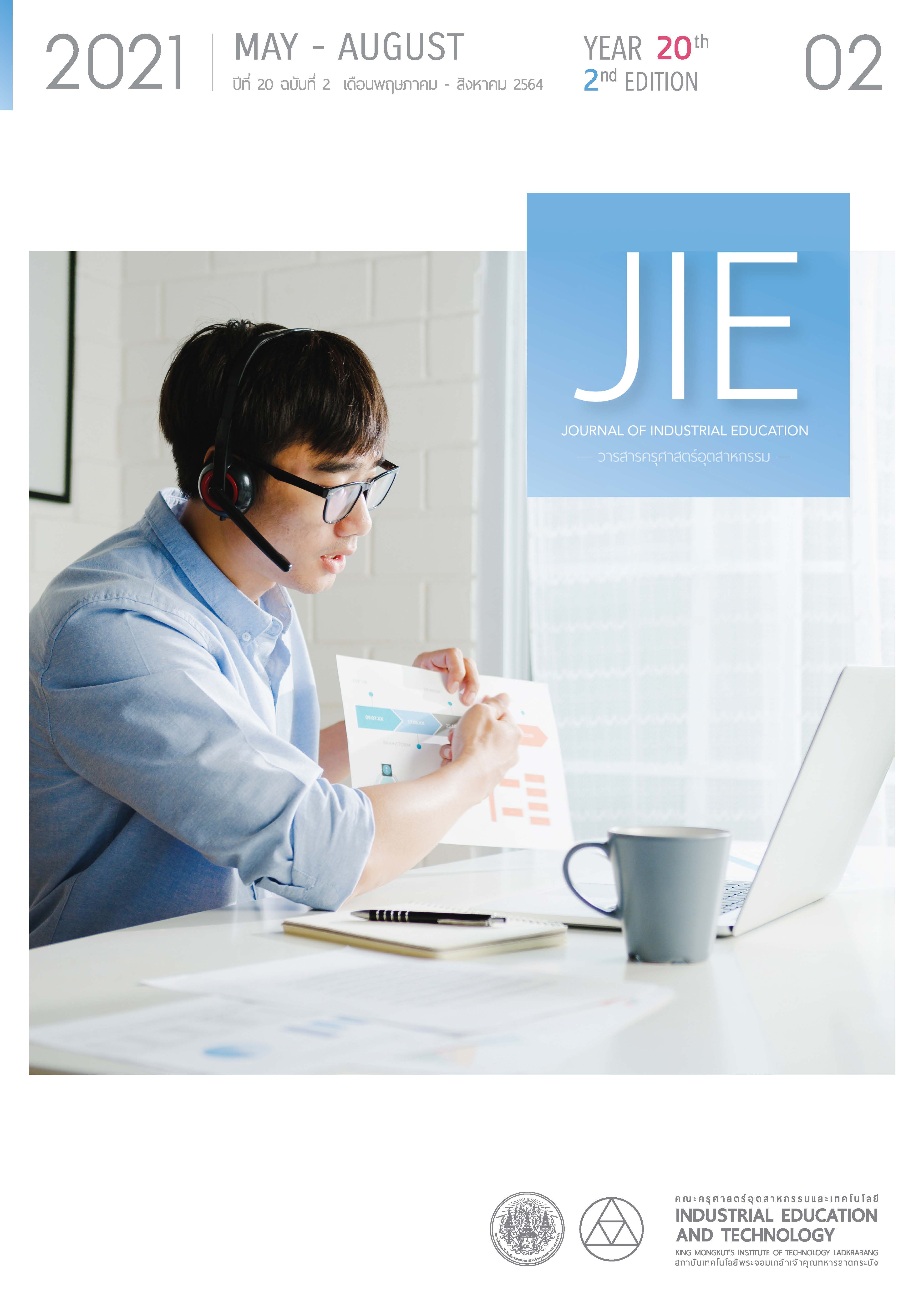THE DEVELOPMENT OF MATHEMATICAL VISUALIZATION ABILITIES THROUGH LEARNING INPLEMENTATION BASED ON CONCRETE PICTORIAL ABSTRACT: CPA APPROACH WITH STICK AND BALL GEOMETRY KIT ON THREE-DIMENSIONAL GEOMETRY OF GRADE 6 STUDENTS
Keywords:
Concrete Pictorial Abstract: CPA, Stick and ball geometry kit, Visualization, Three-dimensional geometry, Grade 6 studentsAbstract
The purpose of this study was to develop mathematical visualization ability through learning activity based on Concrete Pictorial Abstract: CPA with stick and ball geometry kit on three-dimensional geometry of grade 6 students. The participants of this research were 25 grade 6 students in the second semester of the academic year 2020 of Banthachum school. This study was a classroom action research and collected qualitative data. The learning activities totally took nine hours. The research instruments were four lesson plans, worksheets, and mathematical visualization ability test. Data were analyzed by content analysis and categorized students’ answer into three aspects: drawing, identifying the type, and selecting the figure related to three-dimensional geometry. Students' answers were divided in three groups which are level 1, level 2, and level 3. The basic statistic tools used in this study were frequency and percentage. The results showed that most of students were in level 3, meaning that students can visualize and analyze the various three-dimensional geometry then represent their ideas in term of drawing, identifying the type, and selecting the figures of the contour or the base and the forward face of a three-dimensional geometry correctly.
References
National Educational Testing Institute. (2019). O-net exam announcement and report. [online]. Available: http://www.newonetresult.niets.or.th/AnnouncementWeb/Login.aspx Retrieved May 20, 2020.
Yodfai-in, K. (2014). “Effect of organizing mathematics learning activities using phases-methods combination model and strategies for advancing mathematical thinking on mathematical reasoning and visualization abilities of ninth grade students.” An Online Journal of Education. 9(3), 1-15. (in Thai)
Khositdun, D. (2018). “The visualization ability of three-dimensional geometric cross-sections of the elementary students.” Pathumthani University Academic Journal. 10(1), 92-100. (in Thai)
The Institute for the Promotion of Teaching Science and Technology (IPST). (2003). Spatial sense. Bangkok: S.P.N Printing. 2-3. (in Thai)
Chevapansri, K. (2005). “Brain and learning.” Moh-Chao-Ban. 27(317), 17-26. (in Thai)
Burananit, J. (2017). Concrete Pictorial Abstract: CPA is building math basics in children. [online]. Available: https://medium.com/opencurriculum/ Retrieved July 22, 2020. (in Thai)
Hui, C. S., Hoe, L. N., & Lee, K. P. (2017). Teaching and learning with concrete pictorial abstract sequence: A proposed model. [online]. Available: http://hdl.handle.net/10497/18838 Retrieved July 13, 2020.
Hoong, L. Y., Kin, H. W., & Pien. C. L. (2015). Concrete pictorial abstract: Surveying its origins and charting its future. [online]. Available: http://hdl.handle.net/10497/18889 Retrieved July 13, 2020.
Edx education. (2020). Stick and ball geometry kit. [online]. Available: https://www.sci4kid.com/product/ Retrieved June 11, 2020. (in Thai)
Phirttikun, S. (2012). “Quality of students derived from active learning process.” Journal of educational administration Burapha University. 6(2), 5-7. (in Thai)
Santoro, A. M. (2004). Manipulatives: A hands-on. [online]. Available: https://www.naesp.org/sites/default/files/resources/2/Principal/2004/N-Dp28.pdf Retrieved July 12, 2020.
Janhom, P., Viriyapong, R., & Supap, W. (2019). “The development of mathematical concept with learning activities based on Concrete Pictorial Abstract: CPA approach on two-dimensional and three-dimensional geometry for 7 grade students.” Journal of education Naresuan University. 22(4), 149-159. (in Thai)
Wanthamat, C., & Supap, W. (2014). “The development of hands-on learning activities integrated with the rectangular model to enhance mathematical concepts in addition, subtraction, multiplication and division of fractions for 5 grade students.” Master’s thesis, Naresuan University, 102. (in Thai)
Downloads
Published
How to Cite
Issue
Section
License
"The opinions and contents including the words in papers are responsibility by the authors."
"ข้อคิดเห็น เนื้อหา รวมทั้งการใช้ภาษาในบทความถือเป็นความรับผิดชอบของผู้เขียน"



